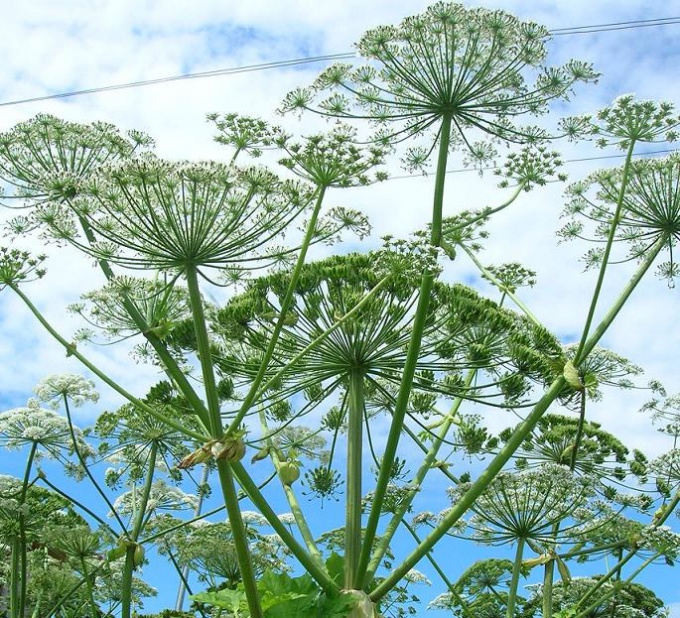Hogweed is a very beautiful and large plant, in the morning in its wide carved leaves going quite a lot of dew. But to touch the grass in any case impossible, otherwise you can get a second-degree burn. Each type of cow parsnip contains coumarins, but their focus is very different, so there are plants almost without risk.
Cow parsnip Sosnowski is very hardy, it is resistant to various chemicals and frost. This plant emit harmful substances that make it dangerous. These essential oils and coumarins can cause burns if you touch the plant. In more severe cases, these substances cause headache, nausea, vomiting and loss of consciousness.
The most dangerous Hogweed from mid-July to end of August in the flowering period. The negative impact of the plant is not immediately, but after some time. Dangerous juice of this herb, which is in contact with the skin makes it sensitive to sunlight, blisters and burns. Even after treatment and flushing of the juice from the skin the risk of injury lasts for several days.
For people suffering from hypersensitivity, a very dangerous essential oil of Heracleum. Particularly harmful this substance is for those for whom it is an allergen. In this case the person is severely swollen throat. If not help the victim, he'll suffocate.
To prevent the negative impact of cow parsnip in contact with juice on the skin should isolate that area from sunlight for at least two days. Thoroughly wash affected skin with soap and water and wipe with alcohol. Instead of alcohol you can take solution of potassium permanganate or furatsilina. Already formed a burn can be lubricated with sea buckthorn oil.
If the juice is got on the skin and on the mucous membrane, as soon as possible need to see a doctor. The response to selection Hogweed is very individual, but most acutely the negative effects seen in people with fair skin.
Other types of this plant is less poisonous, but apparently does not differ from Sosnowski's Hogweed, so you should avoid all varieties of this herb.
